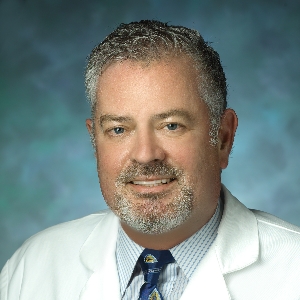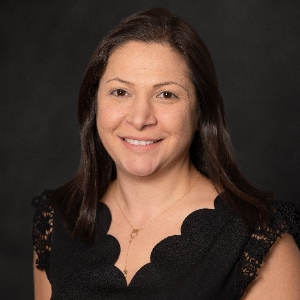Grants
The DIPG / DMG Collaborative has funded $20,122,524 in DIPG/DMG research.
Interested in applying for a grant from the DIPG / DMG Collaborative? Learn more.

Children’s Hospital Colorado – $100,000
$100,000.00
December 2025
Targeting DMG Microenvironment with LSD1 Inhibitors
Diffuse Midline Gliomas or DMGs are a type of brain cancer that primarily arise in children and are incurable. This proposal will evaluate a novel therapy for DMG that targets an enzyme called LSD1. We chose to focus on LSD1 as we have preliminary data that LSD1 turns off the immune system in DMG and so blocking LSD1 can activate the immune system against DMG. We will evaluate a clinically relevant inhibitor to block LSD1, which is called bomedemstat, and is currently in late phase clinical trials in adults with cancer. The investigative team is comprised of three laboratories with complementary expertise that has collaborated for years: the Becher lab has expertise in DMG biology and the development of mouse model systems to evaluate new therapies; the Chandra lab has a long track record of evaluating small molecules that block LSD1 in brain tumor models; and the Bernstein lab has expertise in the basic biology of how proteins such as LSD1 work in cancer.

Erasmus University Medical Center – $200,000 USD (€169,884.56)
$200,000.00
December 2025
Target-first: Development and Optimization of Targeted Radiopharmaceutical Therapies for Pediatric Brain Tumors; A World-First Translational Study
Targeted radiopharmaceutical therapy (TRT) is an innovative form of radiation treatment. Unlike conventional external beam radiation therapy (EBRT), which irradiates both tumor and surrounding healthy tissue, TRT uses a radioactive drug that selectively binds tumor cells and delivers radiation directly at the site of disease. This principle has already shown remarkable success in adults with e.g., neuroendocrine tumors.
For children with diffuse intrinsic pontine glioma/diffuse midline glioma (DIPG/DMG) and medulloblastoma (MB), treatment options remain extremely limited, with radiotherapy only offering temporary relief and chemotherapy showing little benefit. There is an urgent need for novel, effective, and less toxic approaches.
With the generous support of The Cure Starts Now Foundation, our TARGET-FIRST project launched in 2022 to explore TRT as a potential therapy for pediatric brain tumors. In the first project phase, we identified and validated promising molecular targets, establishing a strong foundation for translational development (results presented at the 2025 Brain Cancer Symposium in Banff, Canada).
The next phase will test radiolabeled ligands for binding capacity and therapeutic efficacy in tumor cell lines and preclinical models. These studies will generate the first robust dataset for pediatric TRT, paving the way for precision-guided, less toxic treatments that could transform patient outcomes.

Emory University Hospital – $100,000
$100,000.00
December 2025
Sumoylation as a Novel Therapeutic Target in DIPG
SUMOylation is a post-translational protein modification (PTM) involved in the control of gene regulation, DNA damage repair, immune responses, and tumor growth. During the process, SUMO proteins are attached to target proteins by SUMOylation enzymes. Because of its importance in cancer, SUMOylation inhibitors are being developed as therapeutic agents. Subasumstat (TAK-981) is a first in-class SUMOylation inhibitor that disrupts SUMOylation. TAK-981 is now in multiple oncology clinical trials in patients with advanced cancers. Nothing is known about the importance of SUMOylation in DIPG. We discovered that SUMOylation genes are elevated in DIPG compared to normal brain and most other pediatric brain tumors. When tested in several DIPG cell lines, the SUMOylation inhibitor TAK-981 killed 70-90% DIPG cells in the Petri dish. In this grant we will test the efficacy of the drug in our mouse models of DIPG in combination with radiation. In addition to DIPG, SUMOylation genes are also elevated in two other pediatric brain tumors with poor outcomes - group 3 medulloblastoma and Atypical Teratoid Rhabdoid Tumor (ATRT). If the results of our studies in DIPG hold true in these two brain tumors, our research may have a broader impact in finding treatments for children with brain tumors.

Children’s Hospital Colorado – $99,974
$99,974.00
December 2025
A Diffuse Midline Glioma Combination/Multimodality Clinical Trial and Investigation
In this project, we will bring a paradigm-shifting treatment approach, which has led to cures of other previously incurable childhood cancers, to diffuse midline glioma (DMG) for the first time: combination, multimodality therapy. Our clinical trial will incorporate radiation, locally delivered chemotherapy directly to the tumor, systemic chemotherapy to the whole brain and spinal cord, and medicine to harness the patient’s own immune system to fight their tumor. These treatments will be given in rational stages of therapy to maximize treatment effectiveness and patient safety. Our team brings extensive expertise and experience with DMG biology, clinical trial design, and each of the components of therapy. Our initial pilot trial is small, highly feasible, and achievable within a 12-18-month period. Most importantly, the trial will not be a static set of treatments. Instead, we will have input from many sources, including a committee of experts, a committee of family members, parallel work we will do in our labs, findings from other trials, and data from our own trial to help us continuously improve our trial treatment. Our overall goal is that this trial will improve over time until we achieve long-term survival for DMG patients with good quality of life.

Emory University Hospital – $200,000
$200,000.00
December 2025
Advancing T Cell Therapy for DMG Using Tumor-Directed Gamma Delta T Cells and TLR7/8 Agonist Immunomodulation
We propose a new type of immunotherapy for diffuse midline glioma (DMG) and using gdT cells, a type of T cell that targets cancers differently than the T cells previously used in brain tumor immunotherapies, and using a novel immune-stimulating drug that we developed. Children with DMG need new therapies because radiation therapy and chemotherapy consistently fail to cure patients. Immunotherapy, which has cured previously incurable leukemias, is a promising new approach. Recently immunotherapies using T cells engineered to recognize DMG through Chimeric Antigen Receptors (CAR-T cells), successfully completed phase 1 trials. In these trials, CAR-T cells showed safety and striking effectiveness in individual patients. However, most DMG patients in these CAR-T trials suffered recurrence, suggesting that cure will likely require additional improvements to immunotherapy. To meet the need for improved immunotherapies, we propose to use gdT cells, which recognize and kill tumor cells even without CARs, to test new types of CAR-like innovations, and to add concurrent treatment with ResiPOx an immune stimulating agent that we formulated in nanoparticles to help it cross the blood brain barrier. We propose that these key innovations can bring about a step change and make immunotherapy for DMG newly effective.

University of Alabama at Birmingham Hospital – $200,000
$200,000.00
December 2025
Intranasal Delivery of Oncolytic Virus in DMG
Pediatric high-grade gliomas are one of the most common causes of cancer-related death in children, and diffuse midline gliomas (DMGs) are the most rapidly fatal of these tumors. The infiltrative nature together with delicate tumor location in the brainstem precludes surgical resection, and the blood-brain barrier (BBB) prevents to deliver most drugs to the brain. To overcome this barrier, we will employ an innovative and effective delivery system, intranasal delivery (IND). IND is a practical, noninvasive method of bypassing the BBB to deliver drugs to the brain using unique anatomic (nerve) connection between nose to the brain, reducing unwanted systemic toxicity, and is amenable to convenient administration for patients. The novel altered cold-sore virus G207 has proven safe with evidence of responses and prolonged survival in children with high-grade gliomas. However, a key limitation of G207 is the use of intratumoral injection, which requires an invasive neurosurgical procedure and limits repeat injections, which would be beneficial for treating DMG and is made possible with IND. We will test the hypothesis that IND will facilitate giving repeated, maximum doses of G207 virus that can target DMG cells avoiding the need for invasive surgical procedures and without damaging healthy tissues.

Johns Hopkins University School of Medicine – $99,000
$99,000.00
December 2025
Proinflammatory Myeloid Cells with GD2.CAR as Immunotherapy for High Grade Gliomas, Including Pediatric Diffuse Midline Gliomas
High grade gliomas (HGG), including Diffuse Midline Gliomas (DMG), are highly aggressive brain cancers, with less than 5% survival at five years. DMGs are predominantly seen in children and young adults This proposal seeks to develop a novel immunotherapy to benefit these patients. Myeloid cells are white blood cells that are part of the immune system. We find that intravenous administration of immature myeloid cells lacking a protein called p50 (p50-IMC) slows the growth of HGG tumors in mouse models. p50-IMC develop into mature, activated tumor myeloid cells that direct T cells to attack the cancer. However, following p50-IMC therapy most tumors eventually progress. HGGs and DMGs express a sugar known as GD2 on their surface. To improve their efficacy, we propose to direct p50-IMC to HGG tumors by expressing a GD2-targeting chimeric antigen receptor (CAR) on the p50-IMC. We will determine the effectiveness of p50-IMC/GD2.CAR cells in a model of HGG. We will also evaluate the benefit of adding additional immunotherapy agents to GD2-targeted, activated myeloid cells, to assist them in stimulating T cells to attack the cancer cells. Upon completion of these studies, we anticipate evaluating our novel immunotherapy in clinical trials against HGGs and DMGs.

Johns Hopkins University School of Medicine – $100,000
$100,000.00
December 2025
Imaging of DMG Stem Cells Using Mannose-Weighted CEST MRI
Aggressive brain tumors contain cancer stem cells that drive tumor aggressiveness and recurrence but remain elusive to detect. We have found that they acquire an abnormal sugar coating when they transition from a less aggressive to a more aggressive type. At Johns Hopkins, we have recently developed a specialized magnetic resonance imaging (MRI) technique that can detect these sugars which we hope to use as an imaging biomarker for the presence of glioma cancer stem cells in diffuse midline glioma (DMG). Since this stem cell detection method does not require any injection of contrast agents it is easy and safe to implement with currently used MRI techniques. Building upon this innovation our ultimate goal is to develop and implement, from pre-clinical orthotopic mouse models to DMG patients, our new MRI technique to visualize high mannose levels in DMG stem cells. If succesful, this new imaging technique may then serve as a molecular imaging biomarker for predicting tumor aggressiveness and more importantly to diagnose tumor recurrence following surgery for further radiotherapy planning. Our first two scanned patients showed that mannose imaging is clinically feasible, with a never observed contrast that is distinct from that obtained with conventional MRI techniques currently.

Children's National Medical Center – $200,000
$200,000.00
December 2025
“Targeted and Tuned: GPNMB/B7H3 Dual-Targeting CAR T-Cells With Focused Ultrasound for Potent Immunotherapy in Pediatric Gliomas
Children diagnosed with diffuse midline glioma (DMG), a devastating brain cancer, face heartbreaking odds. Radiation, the only current treatment, provides limited benefit and causes serious, lifelong side effects. Our mission is to create safer, more effective therapies that give children a real chance to survive and thrive.
This project develops a new therapy using engineered immune cells, CAR T cells, designed to attack tumor cells while sparing normal cells. We are advancing a groundbreaking two-part strategy:
- Dual-target CAR therapy – We engineer a child’s immune cells to target two key molecules on tumor cells, reducing the chance of cancer escape and improving long-term effectiveness.
- Focused ultrasound – This non-invasive technology temporarily opens the brain’s protective barrier, enabling CAR T cells to reach tumors more efficiently and boosting their therapeutic activity.
Unlike current CAR T cells being tested in clinical trials, our preclinical studies use models that faithfully replicate both DMG tumor biology and the brain’s immune barriers. This enables rigorous evaluation of safety, delivery, and tumor-killing activity, generating critical data to accelerate the translation of a well-validated CAR therapy to first-in-child trials.

Children's National Medical Center – $200,000
$200,000.00
December 2025
Multilamellar H3K27M RNA Aggregates Targeting Diffuse Midline Glioma
Diffuse midline gliomas (DMGs) are some of the worst childhood cancers, typically marked by an H3K27M mutation, which is an excellent target as it is expressed by nearly all the tumor cells.
We have designed a way to repetitively layer H3K27M attack ‘orders’ in an “onion-like” nanoparticle, which intensely and rapidly stimulates the immune system. This approach cured a large percentage of mice harboring DMGs and, in dogs and adults, has generated remarkable immune responses. In addition, as an off-the-shelf treatment, this vaccine is rapidly available and much easier to give than treatments which require prolonged times for generation. Rapidly retraining the immune system against H3K27M has great potential to improve outcomes for a desperate group of children and their families.
We are hoping to try this in a clinical trial for children with H3K27M+ DMG after standard local radiation treatment. This funding request encompasses the first arm who will receive a year of vaccine therapy. In addition, blood will be drawn so that scientists can examine how the patient’s immune system is responding to the H3K27M nanoparticle vaccine. With a successful trial, we anticipate rapid translation into a Phase 2 combination trial.

Seattle Children’s Hospital – $1,000,000 (Installment 1 of 4)
$250,000.00
September 2025
Augmentation of the tumor immune microenvironment to enhance B7-H3 CAR T cell efficacy against diffuse midline glioma
Diffuse midline glioma (DMG) is an aggressive, incurable pediatric brain tumor requiring new therapies. CAR T cells are a targeted immunotherapy in which some of a patient’s white blood cells are removed, engineered to fight a specific cancer target, and then returned to seek out the tumor. Seattle Children’s and St. Jude have each opened Phase 1 clinical trials of B7-H3 CAR T cells delivered intracranially to children with DMG. While St. Jude’s trial is ongoing, Seattle Children’s completed their trial and found a median survival of over 19 months (compared to the historical 11.2 months) with 3 patients now alive 51, 52, and 59 months from diagnosis. While these results are encouraging, not all children have benefited – likely due to the tumor’s immune microenvironment that opposes the activity of CAR T cells. Here, two leading cellular therapy programs will come together to define the best treatment that can be given prior to CAR T cells, with the aim of disrupting the tumor’s local immune environment to pave a path for CAR T cells to be most effective. Ultimately, this work will define the best treatment regimen prior to CAR T cells and define future clinical trials.

Johns Hopkins Hospital – $100,000
$100,000.00
December 2024
Leveraging Epigenetic Alterations for Therapy of Diffuse Midline Glioma
Diffuse midline glioma (DMG) is a uniformly fatal brainstem tumor of childhood with no effective therapies. Given the failure of chemotherapy and radiation against DMG, we are pursuing strategies to enable effective immunotherapy for this disease. A major roadblock to immunotherapy is that DMG cells effectively ‘hide’ from the body’s immune system. We now understand that DMG cells rely on “epigenetic” modifications, or chemical marks that regulate whether genes are turned on or off. This presents a selective vulnerability in DMG cells that makes them sensitive to epigenetic drugs. We have shown that use of existing, FDA-approved drugs to target epigenetic regulators can activate immune signaling in DMG cells and cause expression of new targets that can be recognized by the immune system, creating an avenue for converting this immunologically ‘cold’ tumor into a ‘hot’ one that can be effectively targeted. In order to validate this strategy for translation to patients, it is necessary to use a mouse model with an intact immune system, unlike the immunodeficient mouse models that are typically used to model human brain tumors. We will employ a powerful DMG mouse model in collaboration with Dr. Oren Becher in order to test the effect of epigenetic therapy on immune signaling in DMG, with the goal of rapid translation of these therapies to patients who urgently need better treatments.

Children’s Hospital of Philadelphia – $100,000
$100,000.00
December 2024
Cytokine Signaling in Diffuse Midline Glioma to Enhance GD2-Directed CAR T Cell Trafficking
Diffuse midline glioma (DMG) is a devastating brain and spinal cord tumor that occurs in children and is universally fatal, killing most patients within one year. New approaches using the body’s immune system to attack DMG have started to show promise for patients. Chimeric antigen receptor or “CAR” T cells are an immune based cancer treatment that involves taking white blood cells from a patient, reprogramming them to seek out and attack tumor cells, then reintroducing these cells back into the patient where they destroy the cancer. One type of CAR T cell seeks out a target called GD2, a sugar molecule that sits on the outside of DMG tumor cells. Using GD2-seeking CAR T cells in mouse models, we observed that they work best when the first dose is given directly into the tumor, followed by doses into the fluid that coats the brain and spinal cord. The CAR T cells in the tumor seem to be sending a signal to the subsequent CAR T cells in the fluid, recruiting them to come fight the tumor as well. The goal of this proposal is to better understand the immune signals coming from DMG tumors and active T cells to help design the best CAR T cell trial for patients.
First, we will evaluate the blood and cerebral spinal fluid from 10 patients with DMG specifically looking at proteins related to the immune system. We will then use patient tumor cells and CAR T cells in the lab to identify what immune proteins are released when CAR T cells encounter and kill DMG tumor cells. Thus, this proposal aims to understand the baseline immune system of DMG patients, and how the signals from the immune system change after tumor cells encounter CAR T cells. Our goal is to create optimal dosing strategies of GD2-seeking CAR T cells and design better CAR T cells for clinical trials to help cure these awful tumors in children.

UNC Eshelman School of Pharmacy – $50,000
$50,000.00
December 2024
Leveraging Open Science and Collaboration to Identify Clinical Quality ALK2 Inhibitors for DIPG
Diffuse intrinsic pontine glioma (DIPG) is a rare, fatal brain cancer for which there are no good treatments. Part of the problem is that, doing business as business is currently done, there are no financial incentives for discovering medicines for DIPG. Traditional companies see that potential for return on investment is low due to the high failure rate of medicines in the clinic, the low patient population, and the added difficulties of treating children. Financial incentives should not be the barrier that stops the identification of life saving medicines: the need for effective treatments for these children is paramount. Since current business models do not support DIPG drug discovery, new business models are clearly needed, and this is a key to our approach. We are part of a global team, working under the umbrella of M4K pharma, using open science and collaboration to revolutionize the way affordable new medicines are discovered and developed. Kinases are important and attractive drug targets, and over 80 kinase inhibitors have been approved by the FDA for clinical use. Evidence suggests that the kinase ALK2 is an excellent target for DIPG drug discovery. Our goal is to advance an ALK2 inhibitor into clinical trials.
Our M4K team has identified a selection of high quality ALK2 inhibitors and are triaging them to determine whether we have a suitable clinical candidate that meets our high standards. These include excellent ALK2 inhibitory potency in cells, high selectivity over other kinases, and chemical properties that will allow for oral dosing, safety, and delivery of high concentration to the region of the brain where the tumor is located. In parallel to our ongoing analysis of current compounds, we are designing and making new inhibitors of ALK2 in case no current compound meets our high standards, and to provide a backup compound if we determine that we already have a compound that is suitable for advancement. This application, “Leveraging open science and collaboration to identify clinical quality ALK2 inhibitors for DIPG” seeks funding to help us with our goal of discovering effective, safe, and affordable medicines for DIPG patients. The Drewry lab seeks funding for two specific aims. In aim 1 we will screen ALK2 inhibitors from all M4K partners in our state-of-the-art NanoBRET cellular assays, for both our primary target ALK2, and off target kinases that we need to have selectivity over. The data generated in this assay is critical to our overall mission. In aim 2 we will design, synthesize, and evaluate new compounds designed to be address issues and potential issues in our current compounds.

Murdoch Children's Research Institute – $100,000 USD / $156,914 AUD
$100,000.00
December 2024
Harnessing Developmental Neurobiology to Reprogram the Cell of Origin of Diffuse Midline Gliomas
Transcription factors can be considered as “molecular switches” that can turn ON or OFF specific sets of genes. The overall objective of this project is to understand how the gene networks up- and downstream of the transcription factor DLX2, and how changes to DLX2 itself, affect brain and DMG development. This will be accomplished in two scientific aims: In Aim 1, we will use advanced genomics and gene-editing technologies to investigate the developing mouse brain (collected from developing mouse embryos). We will determine what other proteins and genes change the behaviour (or function) of DLX2, as well as what proteins and genes are impacted by DLX2. This will help us understand the networks that regulate DLX2, and how normal and abnormal brain development in this region of the brain occurs. In Aim 2, we will manipulate DLX2 in cells that are derived from the DMG tumors of patients, to determine how the cell growth is impacted by changes in DLX2. These manipulated DMG cells will be observed in cell-culture (in vitro) and in live mice where these modified DMG cells have been surgically implanted into newborn mouse brainstem (in vivo).
Despite significant efforts, there has been no improvement in the treatment and outcomes for DIPG (diffuse intrinsic pontine glioma)/DMG (diffuse midline glioma) in the past 50 years. In 2012, the co-discovery that the majority of DMG, including DIPG, have specific mutations of variant histones (known as H3.3 and H3.1) fundamentally changed what we know about these tumors, and as a result, many researchers have redirected their efforts to systemically unravel the underlying biology and to apply these learnings towards the development of new therapies.
Histones help to “wrap” our DNA so that it fits inside the nucleus of the cell. Changes to histones, known as histone modifications, further assist to “unwrap” or “wrap” specific regions of the DNA within the nucleus of the cell so that specific genes or sets of genes can either be expressed or are blocked from being expressed. The more recent application of single cell genomics platforms using DMG samples, including RNA sequencing, support that there is a specific cell of origin for DMGs, an oligodendroglial progenitor cell (OPC). In the adult brain, OPCs eventually become oligodendrocytes that make myelin, a substance that insulates the projections of other brain cells called neurons and coordinates brain function. However, current and proposed therapies for DMG do not target this cell of origin. Our novel work in the emerging field of Cancer Neuroscience addresses the developmental neurobiology of these tumors and through sophisticated and comprehensive analysis of genetic and epigenetic networks and structures, as well as new models (using cell culture and mouse models), we will unlock the underlying biological basis of these tumors towards approaches to novel therapies for DMG.
The Eisenstat laboratory is one of three labs in the world that are expert in understanding the role of the distalless (DLX) class of transcription factors in brain development and the only one focused on applying this knowledge to help solve DMG. The Neuro-oncology laboratory based at the Murdoch Children’s Research Institute (MCRI) and the Brain Cancer Research laboratory based at the Walter and Eliza Hall Institute (WEHI), both affiliated with the University of Melbourne, Australia, have the specialised skillsets and laboratory platforms to perform this work. The MCRI has established and maintained the genetically engineered mouse models lacking Dlx gene function, and has the expertise required for the genetic manipulation of DMG cell lines, including advanced gene editing techniques known as CRISPR. The MCRI also has access to multiple cell-lines derived from patients with DMG which will be used for the these experiments. The WEHI has the specialised equipment required for performing the newborn mouse implantation experiments, as well as the required imaging technology to visualise the tumor development in live mice.
Ultimately, Aim 1 will provide a comprehensive understanding of the role DLX2 plays in normal brain development (and how it interacts with other transcription factors), while Aim 2 will apply this knowledge to how varying levels of DLX2 impacts DMG development. These findings will inform future experiments at the MCRI, including more complex cell culture experiments and sophisticated characterisation of the DLX2 protein itself towards making this transcription factor “druggable”. Our longer-term translational goal is to alter the level of DLX2 in patients with DMG as a novel form of differentiation therapy, so that we may take advantage of the underlying developmental neurobiology of the tumor to change outcomes for DMG patients.